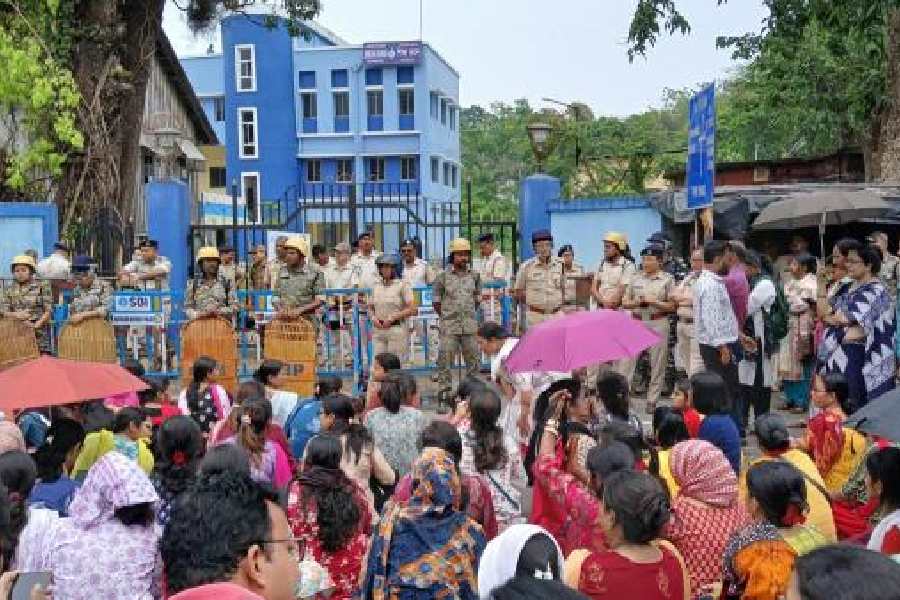
It is not surprising that Akhilesh, a tantva in Nepura village near Rajgir, and Vivekanand, a tantva in Baswan Bigha, weave the Bavan Bootas into saris, stoles, scarves, bedcovers. The Bavan Bootas are 52 Buddhist motifs like the stupa, the peepul leaf, the elephant, and the deer.
Gautama Buddha is said to have delivered lectures in a nearby mango grove named Pavarika and one of his two chief disciples, Shariputra, was born and later attained nirvana here. The Jain tirthankara, Mahavira, spent 14 rainy seasons here. The villages must have existed in the 5th-6th century BC.
I ask Vivekanand if he knows how many generations in his family could weave the Bavan Bootas. He says proudly, "At least seven."
I wonder if this is an all-time understatement. His family might have been weaving for millennia. Rajagriha and his village were part of the great Mauryan empire, and on the Silk Route.
Under the Indo-Greek friendship treaty initiated by Chandragupta Maurya, international trade prospered. The Silk Road provided a way to get goods to other areas, and the Khyber Pass, located on the modern border of Pakistan and Afghanistan, developed into a strategically important place of trade and contact with the rest of the world. The Mauryans could trade with Greece, Hellenic kingdoms, and the Malay Peninsula in West Asia. The main exports sent to those empires were silk, textiles, spices and exotic foods. Technology, science, were also exchanged.
His grandson Asoka converted to Buddhism after the devastating Kalinga war in 260 BC. More than 100,000 people died and over 150,000 Kalingans were displaced.
"What have I done?" Asoka is credited with saying after the battle.
He made Buddhism a doctrine that served as a cultural foundation for political unity. The political unity allowed people from different areas of Mauryan India to travel and sell their merchandise at markets around their domain. Trade thrived as did the ideas of Buddhism-Ahimsa-non-violence and moderation. Small kingdoms and private armies joined the Mauryan empire to benefit from the peaceful trade that the empire was based on.
I have a feeling that weavers in the Mauryan empire, especially those who lived near the sacred sites of Buddha himself, must have started to weave Buddhist Motifs into textiles that were being traded under the Asokan empire. The promotion of Buddhism and trade went hand in hand.
The Bavan Bootis I saw in the red cotton sari woven by Vivekanand was a design that was millennia old. I wish an innovative cultural advisor to Unesco would see the importance of this world heritage and invest as much money in the Babanbut primary weavers' Swablambi Cooperative Society Ltd and the Ashok Primary Weavers' Society, set up by Vivekanand and his elder brother Kewal Ram. The society earns a few lakhs every year. The weavers live in the middle of mud, cow-dung and open sewage and work out of ill-lit rooms. The wives roll the yarn on their thighs. The thighs are black, the skin hard.
One of their best weavers has become a railway employee. Others will go too.
We invest in museums that are brick and mortar without expecting any profit. Why can't we invest in people we label as living heritage without expecting them to turn a profit? Why can't Unesco adopt this bustee, clean the sewers, remove open drains, get the living and working ecosystem of the weavers designed by architects like Balkrishna Doshi, who is designing the new Nalanda University, put in a garden in the muddy, dirty area, and call it a living museum?
Akhilesh from Nepura uses what he calls the Ahimsa Yarn for his weaving. "There are two kinds of yarns, katiya and kosa. In the katiya, the silkworm is allowed to grow and live. We cut the pupa and let it fly out. In the kosa, we boil the pupa, the worm dies and then we unweave the thread from the pupa. I am in Buddha's land. My wife and I use the katiya method. This is the Ahimsa yarn."
If Akhilesh can keep the legacy of Ahimsa alive in his work, surely Unesco, India and Bihar can.
• Ruchira Gupta is a feminist campaigner, writer, visiting professor at New York University,
adviser to the UN, and founder of Indian anti-sex trafficking organisation Apne Aap Worldwide.
Follow on twitter @ruchiragupta and on facebook.com/RuchiraGuptaJournalistWww.apneaap.org










